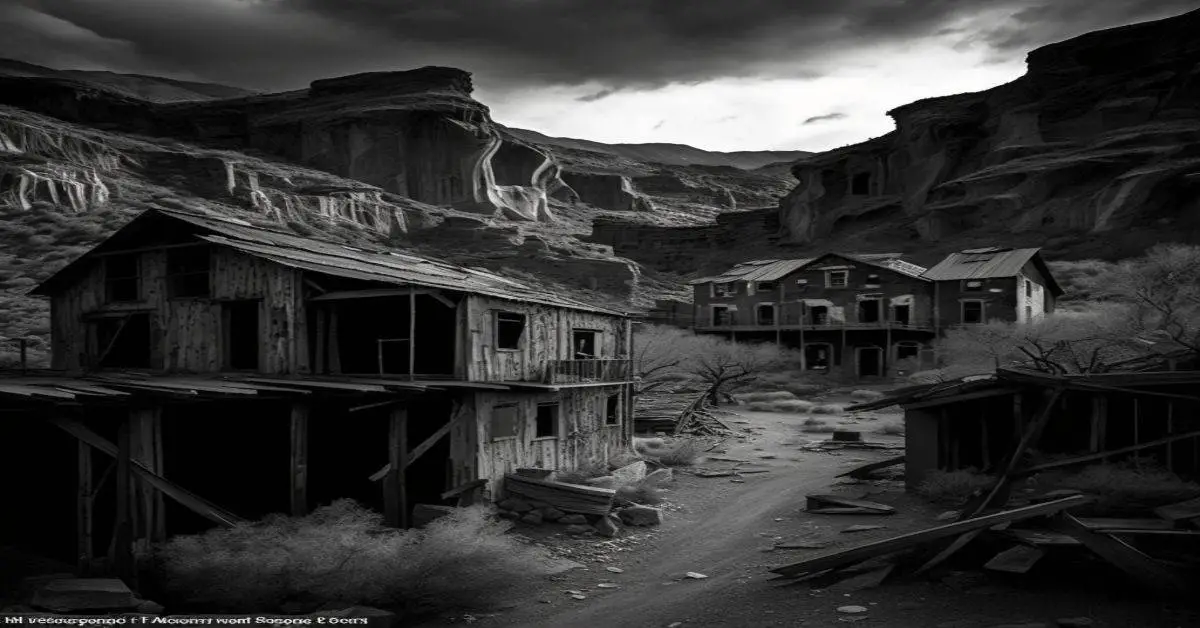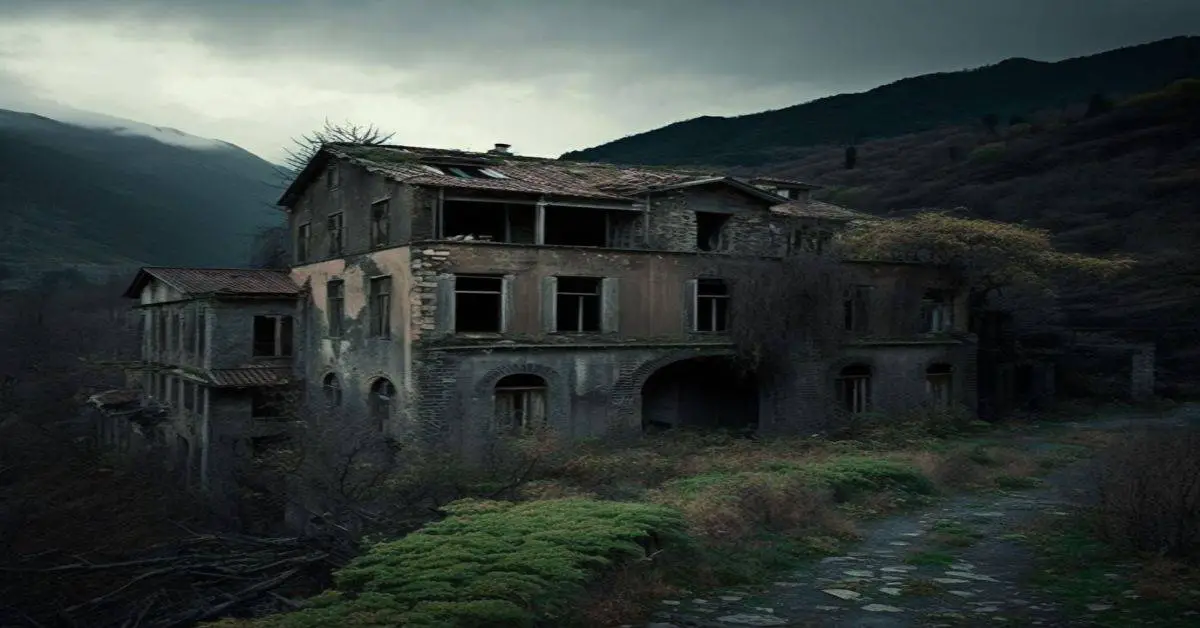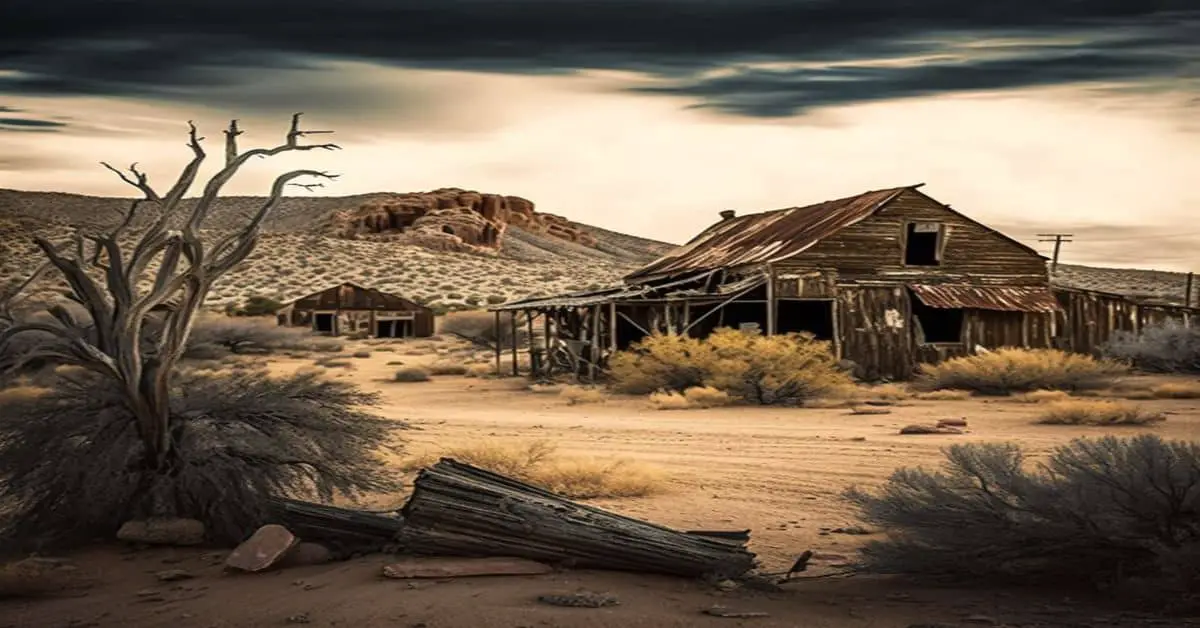Masonic is a ghost town located in the eastern Sierra Nevada region of California, providing a haunting reminder of the state’s gold rush era. Once a thriving town with a population of around a thousand people, its productive years ended around 1901. The town is now a mere shadow of its former self, consisting of only about six rapidly decaying shacks and numerous foundations, with no residents except rodents and sheepherders passing through.
Built on three levels or terraces, Masonic had a unique layout and structure, with the middle level having the main street through town. The town’s mine was located some distance from it, and ore was transported via an extensive tram system. Despite its current decay, most of its ruins and tram system remain, making it a fascinating destination for history buffs and ghost town enthusiasts alike.
This article will delve into the history and discovery of Masonic, its layout and structure, and provide visiting tips for those interested in exploring this haunting California ghost town.
Key Takeaways
- Masonic is a ghost town in eastern Sierra Nevada region of California that was established during the Gold Rush era in the 1860s.
- The town was a significant contributor to the mining industry during its peak, but the decline started around 1901, and now it consists of only about six rapidly decaying shacks and numerous foundations.
- Despite being in a state of disrepair, the remaining buildings in Masonic offer an insight into the architectural style of a gold-mining town in the late 1800s, and visitors can explore the remaining ruins and gain a glimpse into the history of a once-thriving mining community.
- The town can only be reached by taking a 2WD dirt road that is accessible from late spring to early fall, and the natural surroundings of the area are stunning, making it an interesting location to visit for those interested in exploring the ruins of a ghost town and enjoying the natural beauty of the surrounding area.
History and Discovery
The history of Masonic dates back to the Gold Rush era in the 1860s when gold was first discovered in the area. Mining operations soon started and the town quickly grew in population, reaching around a thousand souls during its productive years.
The town was built on three levels or terraces, with the middle level being the main street through town. Masonic significantly contributed to the mining industry during its peak, but its decline started around 1901. The town’s productivity dwindled, and its population began to decrease.
Today, Masonic is a ghost town, consisting of rapidly decaying shacks and numerous foundations. Despite its decline, the ruins and extensive tram system still remain, giving visitors a glimpse into its once-thriving mining community.
Layout and Structure
Located on three terraces, the town of Masonic consisted of upper, middle, and lower sections, with the middle level hosting the town’s main street. The architectural style of Masonic was typical of a gold-mining town, with simple wooden structures built primarily for functional purposes.
The town’s layout was designed to accommodate the flow of traffic and resources, with the mine located some distance from town where the mill was housed. The ore was then transported via an extensive tram system.
The current state of Masonic is one of abandoned buildings and rapidly decaying shacks. Most of the ruins are located in middle town, where the main street once stood. The buildings in Masonic were constructed with materials readily available in the area, such as wood and adobe.
The structures were built to withstand the region’s harsh winters and mild summers. Despite being in a state of disrepair, the remaining buildings in Masonic offer an insight into the architectural style of a gold-mining town in the late 1800s.
Current State and Visiting Tips
Visitors to the abandoned settlement of Masonic can explore the remaining ruins and gain a glimpse into the history of a once-thriving mining community. The town was built on three levels or terraces with the middle level having the main street through town.
There are about 6 rapidly decaying shacks and numerous foundations left in the middle town, where most of the ruins are located. The remains of a tram system used to transport ore from the mine to the mill can also be found. The tram system is extensive and can be seen throughout the town.
Despite its current disrepair, Masonic is a fascinating location for those interested in history and ghost towns.
When planning a visit to Masonic, it is important to note that the town can only be reached by taking a 2WD dirt road that is accessible from late spring to early fall. The climate in the area is mild during summer, but snow and cold are common during winter.
Visitors should also be aware that there are no residents in the town, except for rodents and sheepherders who drive a herd of sheep through the town. The natural surroundings are stunning, and the town is located in a canyon close to the Nevada border.
Overall, Masonic is an interesting location for those interested in exploring the ruins of a once-thriving mining community and enjoying the surrounding area’s natural beauty.
Frequently Asked Questions
What is the history behind the name ‘Masonic’ and how did the town come to be abandoned?
Masonic’s name likely originated from the fraternal order, Freemasonry. The town was abandoned due to the decline in gold production, which led to the closure of the mine and mill. Masonic’s population dwindled until it became a true ghost town.
Are there any notable or famous events or people associated with Masonic’s history?
No famous figures or historic events are associated with Masonic’s history. The town was a mining community that thrived in the late 1800s but declined by 1901. Today, only ruins and tram systems remain.
Has any attempt been made to restore or preserve any of the remaining structures in the town?
While preservation efforts have been minimal, community involvement has been seen in the form of occasional clean-up events. However, the remote location and lack of funding have hindered any significant restoration of Masonic’s remaining structures.
Are there any dangers or hazards that visitors should be aware of when exploring Masonic?
When exploring Masonic, visitors should take necessary safety precautions due to the decaying structures and uneven terrain. Wildlife encounters with rodents and sheepherders driving their herd through town can also pose a potential hazard.
What is the current state of the surrounding landscape and natural environment near Masonic?
As for the current state of the surrounding landscape, it is a mix of rocky terrain and sparse vegetation. Wildlife like rodents and sheepherders can be seen in the area. The environmental impact of human activity remains minimal.


